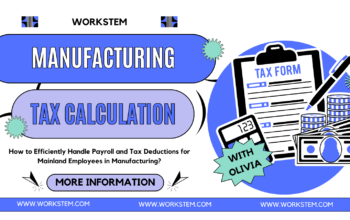The 12-month average daily rate (ADW) is very common when doing payroll, and while many HRs understand the concept of ADW, they don’t know how to apply and calculate it. However, the following cases will help you understand ADW clearly.
What statutory entitlements shall be calculated on the ADW?
The main objective of the Employment (Amendment) Ordinance 2007 is to ensure that all components of wages as defined under the Employment Ordinance are included in the calculation of relevant statutory entitlements.
Relevant statutory entitlements:
- Holiday pay
- Annual leave pay
- Sickness allowance
- Maternity leave pay
- Paternity leave pay
- End of year payment
- Payment in lieu of notice
- Further sum for non-compliance of an order of reinstatement or re-engagement for unreasonable and unlawful dismissal
How to calculate ADW?

Example: Calculating holiday pay for 1 January 2020
Man Ho worked as a full-time waiter in a restaurant, daily- rated at HK$300 with no-pay rest days.
He earned HK$92,700 in 2019, including HK$90,300 for working 301 days (i.e. 365 – 52 days rest days – 12 statutory holidays) and payment of HK$2,400 for 8 statutory holidays:
| Wages | Note | |
| Note | HK$90,300 | = Daily-rated $300 * working 301 days |
| Statutory holiday pay | HK$2,400 | = 8 Statutory holidays |
| 12-month wages earned in 2019 | HK$92,700 |
Leave taken with less than full wages in 2019:
52 rest days without pay + 4 statutory holidays without pay (falling within the first 3 months of employment) = 56 days
Note: as the above 56 days are no-pay leave, the amount to be excluded will be HK$0
Calculating holiday pay on the basis of the 12-month average: (HK$92,700 – 0) / (365 – 52 – 4 (days)) = HK$300
Man Ho’s holiday pay for 1 January 2020: HK$300
Do you still think ADW calculation is complicated? Don’t worry, Workstem — a HR system that helps you automatically calculate ADW! The system also supports hourly and monthly wages calculation, various pay periods, different leaves / holidays calculated according to ADW, etc. You can add and customize all the pay items in your organizations.
What entitlements are not calculated to the definition of wages?
According to Employment Ordinance, “wages” does not include:
- the value of any accommodation, education, food, fuel, water, light or medical care provided by the employer;
- employer’s contribution to any retirement scheme;
- commission, attendance allowance or attendance bonus which is of a gratuitous nature or is payable only at the discretion of the employer;
- non-recurrent travelling allowance or the value of any travelling concession or travelling allowance for actual expenses incurred by the employment;
- any sum payable to the employee to defray special expenses incurred by him by the nature of his employment;
- end of year payment, or annual bonus which is of a gratuitous nature or is payable only at the discretion of the employer;
- gratuity payable on completion or termination of a contract of employment.
To avoid deflating the average wages, HR is required to exclude the amount and periods of unpaid or not full wages when calculating the ADW as stipulated by the E(A)O 2007. However, if overtime work is fixed or the average amount of overtime pay in the past 12 months is higher than 20% of the average monthly salary, then the overtime payment should be included in the wages.
Doing payroll is not easy. The payroll function of Workstem can automatically and accurately calculate all the pay items that are most likely to make mistakes for employers. It contains the process from calculating pay items to making the payment.







